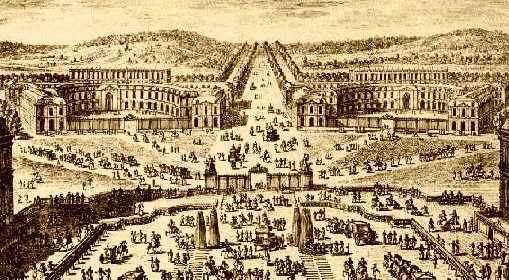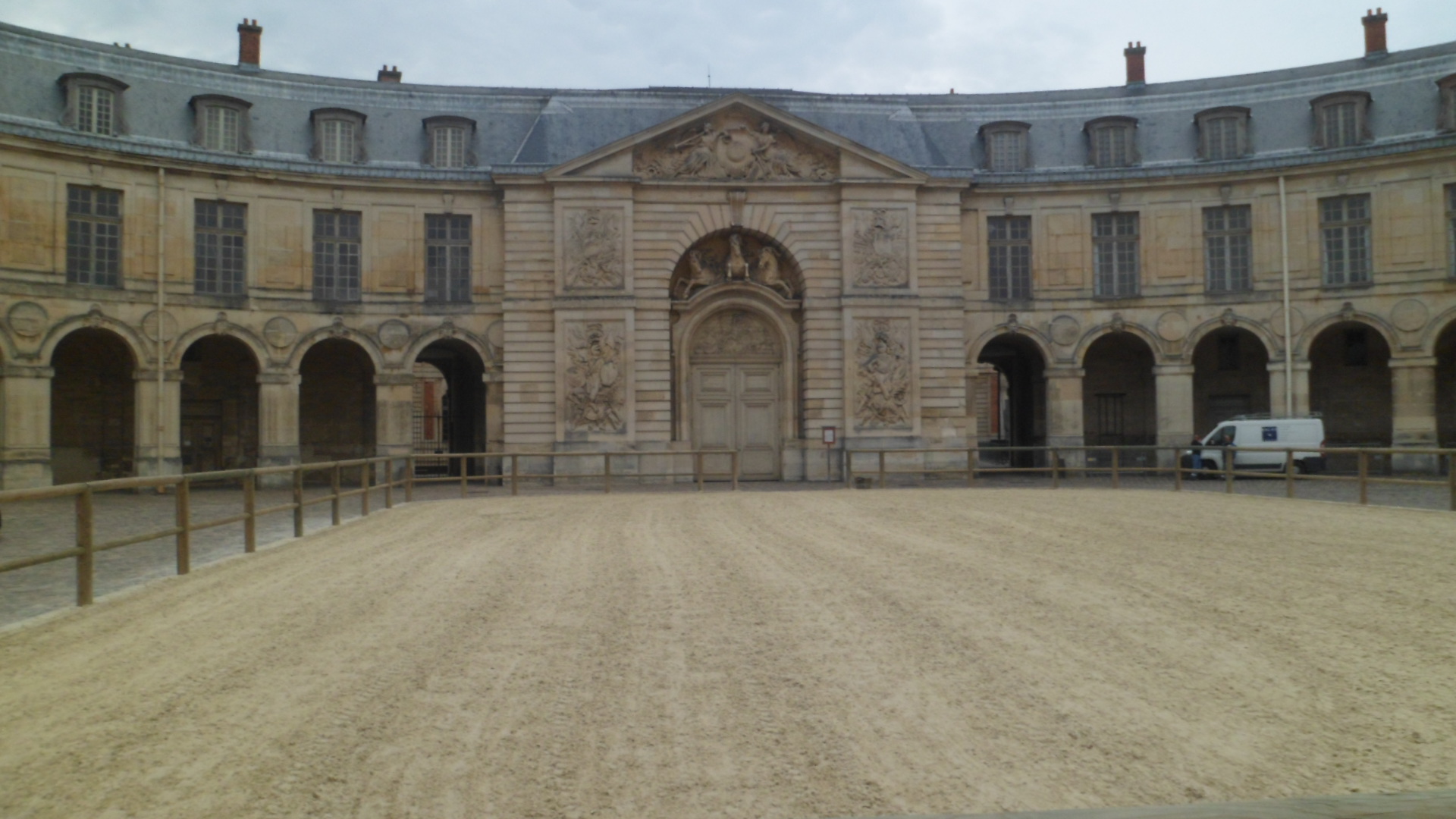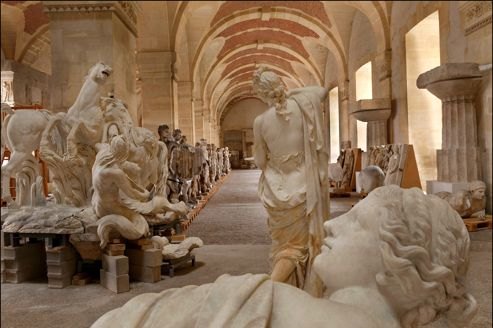 |
| View of the two stables from the royal courtyard. The Great Stables are on the left. |
The Great Stables
The Grande Écurie - or Great Stable - was run by the Grand Écuyer de France (who was referred to simply as Monsieur le Grand) who was in charge of primarily the King and the entourage used at ceremonials. This entourage counted not only heralds but musicians too. One of his primary duties was to take care of the royal stables; at the time the stables were located opposite of the palace in two buildings. The Grand Écuyer was responsible for the King's war and hunting horses - when the King died the Grand Écuyer could claim everything in the stable he oversaw; and that really is everything from horses to brims! Also, the Grand Écuyer was responsible for the military academies throughout France for the young noblemen who were not wealthy or powerful enough to gain a place at court.
There were - of course - other people employed in the Grande Écurie. If the King wanted to go for a ride to the Trianons at night or simply just a walk in the gardens, six pages from the Grande Écurie carried torches to light up the monarch's path. Throughout the Ancien Regime the post of Grand Écuyer belonged to the de Lorraine-family:
The Grand Écuyers during the Ancien Regime:
Henri de Lorraine, Comte d'Harcourt
Served from 1643-1658
Louis de Lorraine, Comte d'Armagnac
Served: 1666-1677
Henri de Lorraine, Comte de Brionne
Served: 1677-1718
Charles de Lorraine, Comte d'Armagnac
Served: 1718-1752
Louis Charles de Lorraine, Comte de Brionne
Served: 1752-1761
Charles Eugène de Lorraine, Prince de Lambesc
Served: 1761-1790
 |
| The Grande Écurie |
The Small Stable
The Petite Écurie was the other half of the royal stables and was run by the Premier Écuyer, known as Monsieur de Premier. The Small Stable housed the School of Pages which provided an education within the court for young noblemen, probably the younger sons who would not inherit a title. Generally, the Small Stable took care of all the lesser personages who partook in ceremonials such as pages and valets but also the equipment for their horses. Today, the Small Stable is used to store no less than 5000 statues; the enclosures for the horses were torn down.
Despite what one might think when hearing the two titles, the Premier Écuyer did not have a lesser rank than the Grand Écuyer, nor did he swear an oath of loyalty. However, this was not always how the courtiers viewed things. In 1728 the Comte d'Armagnac and the Premier Écuyer fell out and the Grand Écuyer went so far as to publish his "sorrows" - what was worse was that in the publication he also declared that he saw the Petite Écurie as nothing more than a sub-department of the Grande Écurie!
Both the Grand and the Premier Écuyer would draw up a list of the expenses of their respective stable and send it directly to the King.
 |
| The Small Stables |


No comments:
Post a Comment